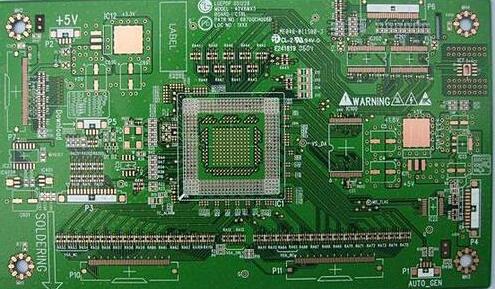The new spring of the automotive sensor market, ceramic substrates can respond freely
For the future development trend of the automobile industry, it is a common consensus from all walks of life to move towards intelligence. Because of this, the enthusiasm for the development of smart cars is high, attracting a large number of enterprises and capital to participate, and the speed of popularization is accelerating. Driven by smart cars, the automotive sensor market has ushered in new opportunities for development.
As the information source of the automobile electronic control system, the automobile sensor is the key component of the automobile electronic control system, and it is also one of the core contents of the research in the field of automobile electronic technology. Automobile sensors perform real-time and accurate measurement and control of various information such as temperature, pressure, position, speed, acceleration, and vibration. The key to measuring the level of the modern high-end car control system lies in the number and level of its sensors. At present, there are about a hundred sensors installed on an ordinary domestic car, while the number of sensors on a luxury car is as many as 200.
Engine sensors are the core of the entire vehicle sensor. They can improve engine power, reduce fuel consumption, reduce exhaust gas, and reflect faults. Because they work in harsh environments such as engine vibration, gasoline vapor, sludge, and water spray, they The technical indicators of resistance to harsh environments are higher than those of ordinary sensors.
Chassis control sensors refer to sensors distributed in the transmission control system, suspension control system, power steering system, and anti-lock braking system. They have different functions in different systems, but their working principles are the same as those in the engine.

The main purpose of sensors for body control is to improve the safety, reliability, and comfort of automobiles. The technical requirements for resistance to harsh environments are not as strict as those for engines and chassis. General industrial sensors can be applied with a little improvement. Mainly used in a variety of temperature sensors, air volume sensors, sunlight sensors, etc. in automatic air conditioning systems, vehicle speed sensors in brake door lock systems, acceleration sensors in airbag systems, light sensors in automatic brightness control, and blind spot alarm systems. Ultrasonic sensors, image sensors, etc.
Smart cars are different again, with many more sensors to assist driving, such as the most important infrared radar sensor and so on. In the previous ordinary cars, sensors used ceramic substrates for stability, so is ceramic substrates still so popular on smart cars in the new era?
Smart cars have made a lot of additions on the original basis, and did not reduce which parts of the sensors. The added sensors are basically some used to detect road conditions and assist driving. If you are not careful, the car crashes and kills people. I believe that manufacturers dare not reduce their requirements for the sake of cost, and ceramic substrates must still be their first choice.
Domestic sensor manufacturers still used imported ceramic substrates on a large scale before the emergence of Stoner. Until the emergence of Stoner, the embarrassing situation of domestic sensors was broken. The cost of imported ceramic substrates was on average about 40% higher than that of domestic products. As a result, domestically-made sensors are uncompetitive in the world. Stoner discovered this phenomenon, combined with national-level laboratories and major university research institutes, to create a phenomenon-level product. The PCB ceramic substrate created by laser technology is completely different from the previous sintering manufacturing process and can be maximized. The function of the ceramic substrate is of great milestone significance for the entire domestic ceramic substrate industry-this is also one of the reasons for the formation of my country's sensor breakthrough.
With the rapid development of the Internet of Things, there will be more and more applications of sensors. Stone will lead domestic ceramic substrate manufacturers to increase production and research and development efforts, and strive to contribute to my country's production of world-class electronic products.